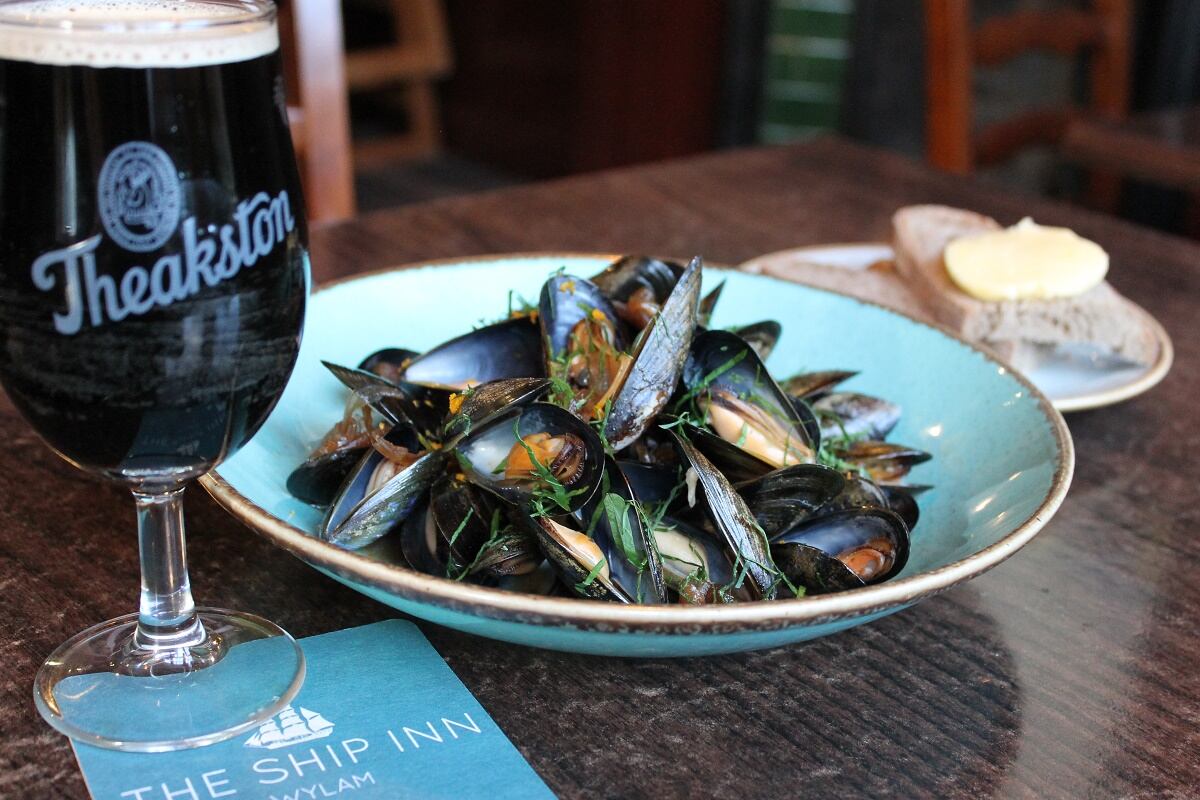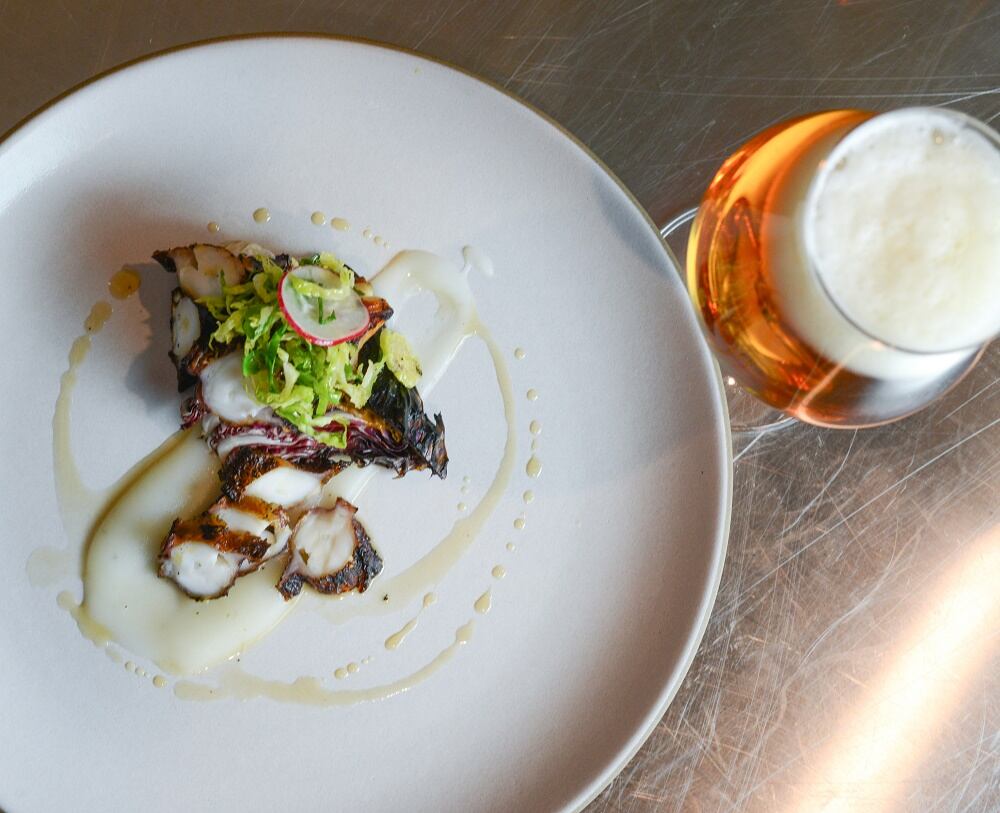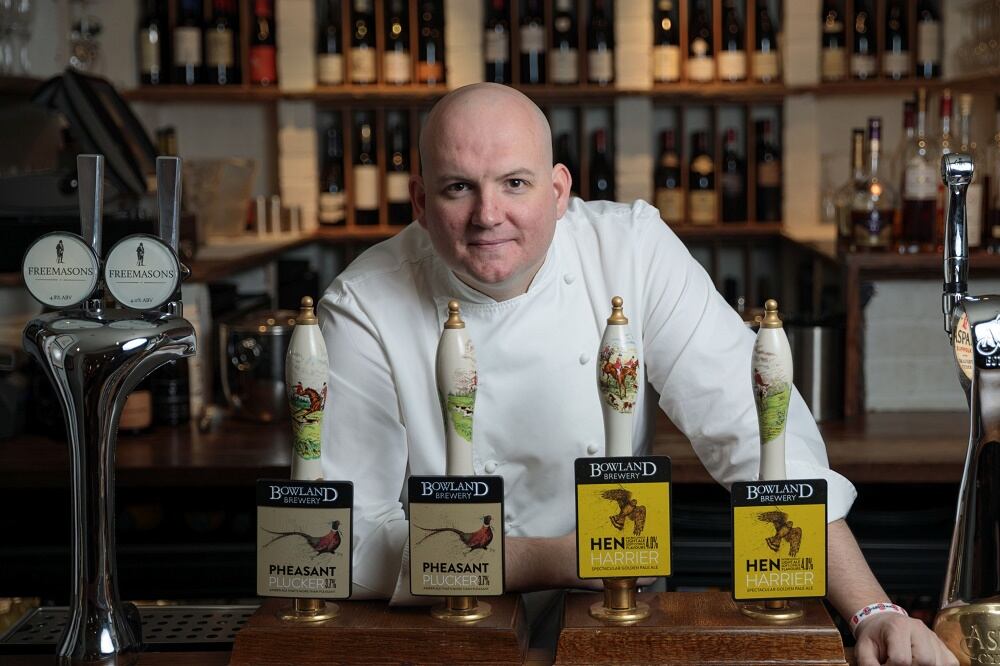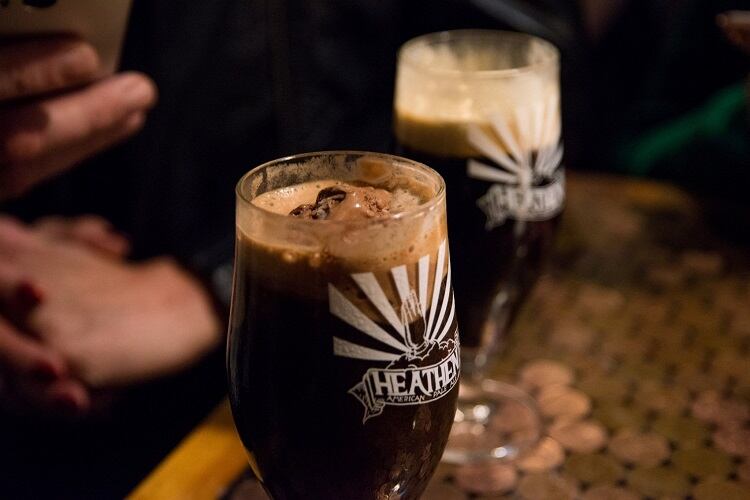Steak and ale pie is a comforting classic that has stood the test of time, but it is not where the buck stops when it comes to cooking with beer. The drink can be used in a multitude of dishes, from sweet to savoury, from being the star of the show in ice creams to a subtle flavour booster in marinades and vinegars.
Chefs and brewing experts share their secrets to concocting a successful meal with the nation’s favourite drink. Cooking with beer was the natural choice for boosting the flavour and aroma in a meal a few hundred years ago, beer and food writer Mark Dredge explains. Not many traditional recipes involving beer survive from previous centuries but it was customary for people to add it to simple foods like stews and soups at home, he says. His estimate is that because of its role as an ad hoc flavour booster in domestic kitchens, it wasn’t until the 1950s that ‘beer cuisine’ as we know it came to the fore.

However, innovative chefs of today are not looking back but forward, finding unique and inventive ways to use the brew, says Dredge. The variety of flavours in beers gives chefs “an additional seasoning”. In his book Cooking with Beer, he adds: “In a way, none of this [history] really matters now because newer brewers and chefs aren’t looking at old braises. Instead, they’re looking at contemporary cooking, they’re using current food influences, and they’re developing them with beer.”
Admittedly, not everybody is a fan. Adam Dulye, executive chef of the Brewers Association, the not-for-profit trade body for small and independent American craft brewers and author of The Beer Pantry, argues it is far better to pair beer with food than use it in a dish. He explains: “Chefs need to think of beer as one of the flavour components of a dish, the only difference being it’s in a glass, not on a plate.”
It is the nuances of the beer used that will make or break a boozy dish. Dulye cautions: “When cooking ask yourself one question: does an ingredient make the dish taste better? If so, good. If not, don’t add it.”
Freddy Bird, head chef of the award winning Lido restaurant in Bristol, adds that the matter is subjective.
He says: “Beer works just as well with food as in it. Who’s to say that a steak and ale pie is any better than a piece of aged comté with a saison?”
But being experimental with the relationship between beer and food can provide a great name-maker for your business. When Abbeydale Brewery in Sheffield brewed an ice cream inspired bacon stout last year (Don’t Go Bacon My Heart), it hosted an ice cream floats event where customers quickly got on board.
Laura Rangeley from the brewery explains: “At first, customers seemed a little bewildered by the concept but, once they tasted it, it wasn’t difficult to convert them. Many of them said it was something they’d love to try at home.”
“I’d love to see more pubs using beer in their food menus, it’s a great way to engage customers and add something unique to the menu,” she adds. Yet getting the flavour of beer into food is not easy, according to writer Dredge.
“Most of the flavour is volatile, meaning when you heat it up the aromas go first, taking most of the flavour with it, then the liquid evaporates and leaves behind the bitterness,” he explains. However, mastering the art of this balancing act is part of the fun and the challenge of cooking with beer, he says.

Where to start?
For those looking for somewhere to start, the sweetness of dark beers can be used to bring out the flavours in meats and in condiments and sauces. Guinness braised feather blade of beef is one of the
most popular dishes at the Unruly Pig pub in Suffolk, which was a winner at the 2018 Estrella Damm Top 50 Gastro-pubs awards. “It’s a stonker,” exclaims Dave Wall, head chef at the pub.
“The beef is braised very slowly in Guinness, treacle, dates and beef stock for 12 hours. The stock is then reduced and the meat glazed with a wonderfully rich unctuous sauce. We serve it with fresh egg tagliatelle, beer-battered oysters and a glorious oyster velouté,” he explains.
Wall describes the end result: “It’s rich, it’s warming and it’s comforting but, more to the point, it flies out the kitchen.”
Customers “are certainly intrigued but mostly delighted,” he adds.
Creating vinegar
For Steve Smith, chef-owner of Freemasons at Wiswell, in Lancashire, using beer to create vinegar “has been a revolution for us really”.
He explains: “We use beer vinegar where traditionally you would use other vinegars throughout the year. For example, in summer we used a beer vinegar to dress the tomatoes where we would traditionally use balsamic vinegar. In autumn and winter we use it to dress things like duck livers and very rich things so it cooks through.”
“It’s absolutely so sweet and smooth, it’s a great foil for a lot of stuff we use, in sauces, etc. It has become an essential part of the everyday kitchen,” Smith adds.
The process of making the vinegar is relatively simple, and it can be aged for as little or as long as you want, the chef explains. “It is just a super product and there’s obviously no lack of it – there is always lots and lots of beer left over,” he says.
Beer vinegar has “completely taken over the kitchen” at the Clitheroe pub, Smith says, with it being used instead of the conventional balsamic, white wine and red wine vinegars. “You have no wastage on your beer and you get this beautiful sweet and sour product with so many characteristics that you can use throughout the year.”
Chef-licensee Paul Johnson, of the Ship Inn at Wylam, Tyne & Wear, also uses beer in a number of his dishes as a main ingredient, as well as to boost flavour profiles. “For example, we cure salmon in a strong IPA such as Lagunitas, which gives it a wonderful flavour with tropical fruits and floral notes,” he describes.

Beer can also be “fantastic” for adding richness and depth to stocks and sauces, he recommends. “As we’re in the north-east, we’ve made our brown sauce into a house speciality by making it from scratch using Newcastle Brown Ale.” Best-sellers at Johnson’s pub include onion chutney made with Theakston Barista Stout, and added orange zest to complement the flavour of the beer, local mussels cooked in beer, and roasted ham joints in beer to serve with fried duck egg and chips.
Sweet tooth
“People don’t necessarily associate beer with desserts, but we’ve found it works brilliantly,” says Johnson. Beers like the pub’s favoured Theakston Barista Stout can be “wonderfully flexible”, and their use in sweet options at the Northumberland village pub goes down a treat.
“We’ve used the same beer to create a perfectly moist chocolate stout cake topped with a stout syrup and even a beer ice cream. I don’t think you could find a wine that would work in so many different ways,” he says.
At the Unruly Pig, head chef Wall agrees and uses beer and chocolate to “make a wonderful dessert cake”, that customers adore. “Try not to make it too grown up,” is the advice of Bristol chef Bird on developing recipes for beer ice cream and other desserts. “The intentional use of milk chocolate, the caramel flavours, and the salt, make a good contrast to the bitter, intense beer ‘syrup’,” he explains.
“Stout and chocolate are my favourite combo but a milder ale and bread ice cream is also delicious,” Bird says, citing the former as his customers’ favourite. “It’s something about a classic children’s ice cream with a little grown-up finish to it,” he adds.
One of Bird’s recent experiments was a hops and honey combination, based on Skinner’s Brewery’s Hops ’n’ Honey ale, though he says he found the infusion of hops too bitter. But he adds: “It worked fabulously with maple syrup though, and the addition of a shot of well-aged dark rum on top was great.”
Beer floats or ice cream sundaes are a great way to get your flavours together, according to Rangeley from Abbeydale Brewery. “Rum and raisin ice cream with an imperial stout such as our Lost Souls is a decadent treat, or use a fruity pale with a scoop of raspberry ripple for something more refreshing,” she explains.
A need to experiment
Throw away the rulebook and experiment with using beer in existing favourites, is the key message from chefs who cook with beer. Even if one experiment goes south, the next could be your pub’s signature dish that drives new customers through your doors.
“The best thing about cooking with beer is that there are no rules,” explains Johnson. Customers have no preconceptions of beer cooking given its relative infancy as a concept, Johnson says. “We all know red wine goes with beef, white wine goes with fish, and so on. So it is exciting to just try new things with beer. You can let your imagination go wild, experiment and make it up as you go along.”

Steve Smith, from the Freemasons at Wiswell, shares the sentiment that experimenting with what you have is a great place to start. “We are very much of a view that there aren’t any rules or any dos or any don’ts.” he says. “From one publican to another: you’re in a pub, you’ve got the beer, you’ve got the food. Give it a go. Some things will work and some things won’t.”
The options are endless. “We make a beer ice cream, a beer jelly, there are just so many different things. It is a case of freeing your mind up,” Smith adds.
The beer world is bursting with opportunities to be innovative and stand out – something that could help your pub balance the books and make a name for itself. “We all know the traditional things of steak and ale pies and braising meat in beer, but you have fantastic new stuff – new beers, new flavours – coming through all the time,” Smith adds.
Johnson agrees with this, describing cooking with beer as a trend that will only continue to grow. He sums up: “As the world of craft beer grows, there are more and more interesting and unusual flavours coming into beer. My advice is try things and taste.”

